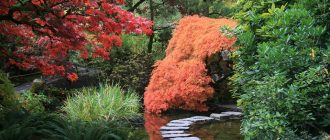Find out why people in the US and Europe are going head over heels over Japanese meditation Zen gardens originating from Kyoto.
The ancient tradition of Japanese garden design has found new life in the west in modern times. Famous in the west as the Japanese Zen garden the essence of the style revolves around the use of certain natural elements to create a tranquil environment.
The essential natural material in the Zen garden is rock, or rather rocks. The aim is to use these rocks and other elements in such a manner that suggests innate symbolism. The other main natural element that is used to create this meditative zone is sand. In some cases sand can be substituted with gravel and in others both sand and gravel can be used together. Ironically the use of grass and trees is limited in the Zen garden.
The basic structure of the Zen meditation garden is that of a pit. The pit is filled with sand or gravel and then the rocks are carefully composed on the surface of the pit. The sand in the pit is artistically raked on a daily basis in order to create the impression of rippling water.
Somehow this symbolic representation of water and islands tends to create a soothing environment for those within the vicinity. To some people the structure and design of a Zen meditation garden reflects the actual geographical position of Japan with the raked sand being the ocean and the rocks symbolizing the island of Japan.
Psychological benefits
In recent years neuroscientists have conducted in depth research regarding the psychological implications of the Kyoto gardens. The principle of suggestive symmetry automatically works the brain to visualize a tree just by connecting the spacing between the rocks.
The meditative quality present in these rock gardens is what has earned them the label of Zen meditation gardens. The westerners tend to feel that the Japanese rock garden has a Zen like atmosphere and ambiance; Zen being a version of Buddhism that focuses on introspection and enlightenment. Of course this enlightenment is to be achieved through deep meditation which is what the garden atmosphere is ideal for.
So where does this unique concept of a meditative garden space come from. Not surprisingly it was a priest from 13th century Japan who first came up with the idea of such a garden. The region of Kyoto was the centre for the development of Japanese meditation Zen gardens.
The region has some of the oldest examples of the type of gardens under discussion. The garden found in the famous Ryoan-ji Temple of Kyoto dates back to over 500 years. The well preserved Zen meditation gardens in Kyoto attract many visitors each year.
Since the concept has gained popularity in the west there are quite a few places where you will be able to experience the garden. Portland and San Francisco have some excellent examples of Japanese Zen gardens.
Some people have become so infatuated by the concept of Zen gardens that they count them in the list of stress relieving products. You will even be able to find table top versions of the gardens that consist of a tray composed with sand and stones in much the same manner as the real garden.




